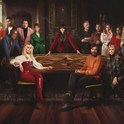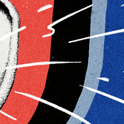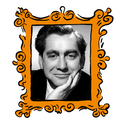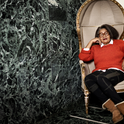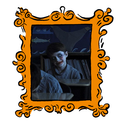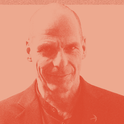I’m about to set off for the Edinburgh International Festival, one of the great feasts of the musical calendar, founded way back in 1947, during that great optimistic wave of artistic vision that followed half a century of global war. It is the progenitor of much else—the fabled Fringe, the book festival, the film festival—and it takes place in a city whose sublime beauty has a distinctly European character: it is the Salzburg of the north, but so much more. The Georgian New Town, the castle, the Reformation-era Old Town. One minute it’s David Hume or Adam Smith who might be around the corner; next, John Knox. From the top of the New Town, with its supremely rational and enlightened cityscape, you can see the sea in one direction and an extinct volcano, Arthur’s Seat, in the other.
I’ve been coming on and off for 30 years. It was my first visit that actually lured me into becoming a singer and leaving the groves of academe. I spent the summer of my second year as a research fellow in Oxford flying to Sydney, rehearsing Britten’s A Midsummer Night’s Dream with Baz Luhrmann and the Australian opera, and returning to perform in the newly fitted-out Edinburgh Festival Theatre. As Lysander, I carelessly slipped on a wet stage, fell hard on my backside and received the biggest ovation I’ve ever managed. There was no looking back.
One of the great institutions of the festival is the chamber music series in the Queen’s Hall, a converted chapel with the acoustics and intimacy of the Wigmore Hall but nearly twice the capacity. Song recitals here are a joy, only slightly marred by the 11am kick-off. Singers, you should know, start the day slowly.
♦♦♦
This year, I’ll be singing Schubert with an Edinburgh pianist, the marvellous Steven Osborne, and it’s Schubert’s final, anomalous song cycle which we’ll be performing, written in his last, visionary year, 1828. It’s an anomaly because it’s made out of two sets of poems. Seven are by Ludwig Rellstab, and Schubert may well have inherited them from the effects of Ludwig van Beethoven. They include perhaps his most famous melody, “Ständchen” (“Serenade”), a tune whose sunny popularity belies its dark undercurrent of sexual threat.
The following six are by the new poetic kid on the block—was Schubert the first to set him?—Heinrich Heine, who went on to be set more often than any other poet in the course of the 19th century. There are dozens of versions of his “Du bist wie eine Blume” (“You are like a flower”), the ironic intent of whose punchline was all too often misunderstood or elided (I pray that God will keep you, the poet says, just as pure as that flower).
Schubert wrote the songs out on a single bundle of manuscript paper, so he somehow meant them to be together, even if they are musically and poetically chalk and cheese, the expressionism and bareness of the Heine settings seeming to reach somehow ineffably beyond. The publisher who bought them, one Tobias Haslinger, added an extra song, the quintessentially Schubertian “Die Taubenpost” (“The Pigeon Post”), with its heartbreaking quality of major-key longing, and gave the set its melancholic title, Schwanengesang—or Swan Song. Schubert died not long after he wrote “Die Taubenpost”, aged only 31.
Gearing up for another Schwanengesang reminds me of previous excursions. For a while, Russia was as much a part of my musical life as Edinburgh. It was mostly Moscow, but Schwanengesang in St Petersburg was particularly apt—Dostoevsky’s streetscape being perfect for the last of Schubert’s Heine settings, “Der Doppelgänger”. That must have been about 10 years ago—after the invasion of Crimea, which happened while I was in Moscow for a War Requiem with Vladimir Jurowski and the LPO, and before the full-scale invasion of Ukraine, which happened a week after my last visit, for concerts with Yuri Bashmet which never happened.
♦♦♦
A month or so ago, it was Schwanengesang in Świdnica, Poland, a place which reminds one in so many ways of the impossibly complex and poisoned past of a central and eastern Europe, historically poised between the Scylla of Prussian militarism and the Charybdis of the hungry Russian Empire.
At the heart of the city is the extraordinary church where we performed: the Church of Peace, named for the peace of Westphalia that, in 1648, ended the Thirty Years’ War, which was as devastating in its way to central Europe as were to be the wars between 1914 and 1945. Under pressure from the Swedish court, the Emperor Ferdinand allowed the construction of a Lutheran church in 1652. Strict conditions were imposed: it had to be built solely of wood, sand, straw and clay, without towers. Restored not so long ago, and with a riot of baroque excess inside, it is a potent symbolic reminder that the bloody enmities of the past can be overcome, those of the 17th and 20th centuries alike.


